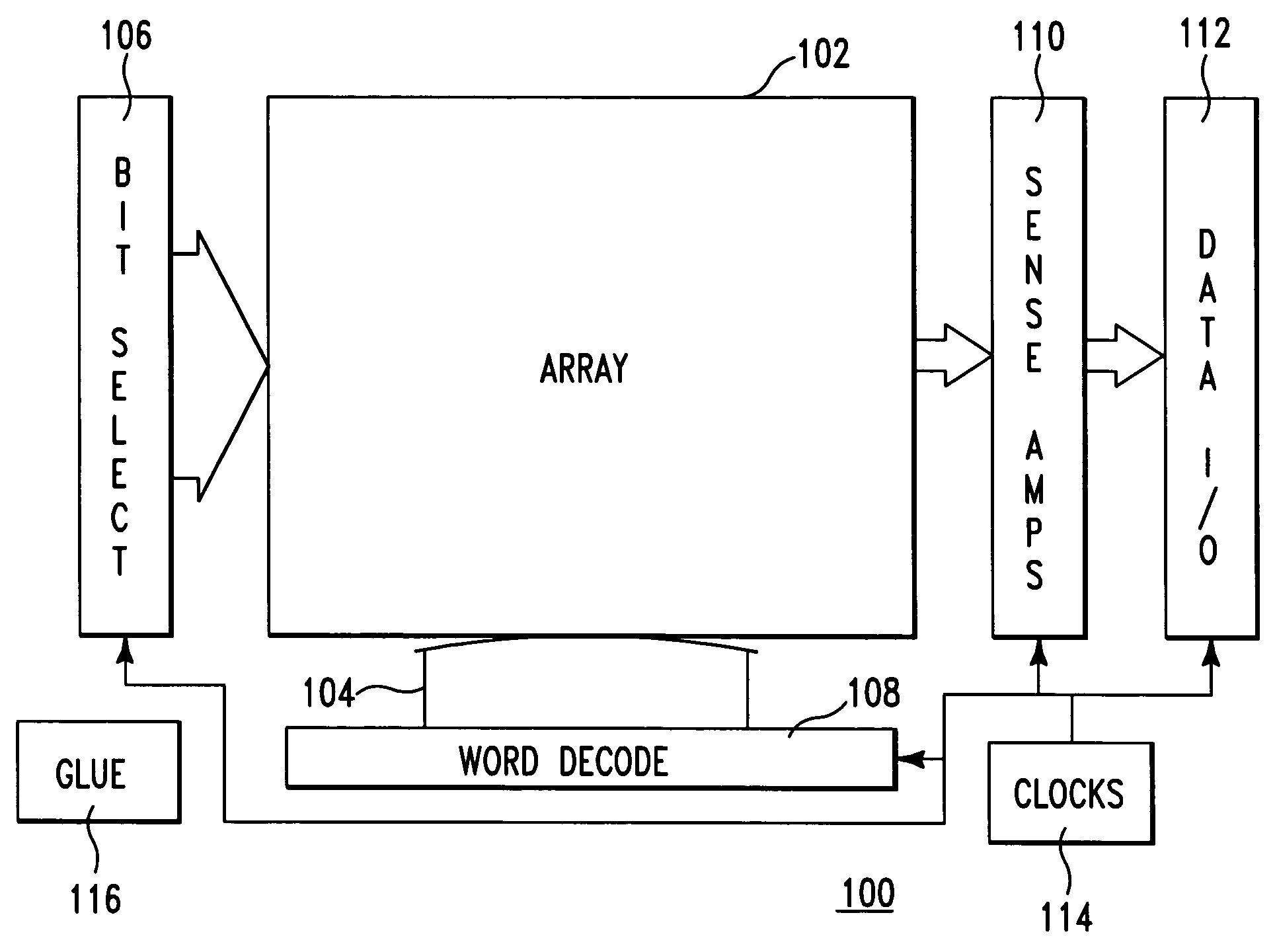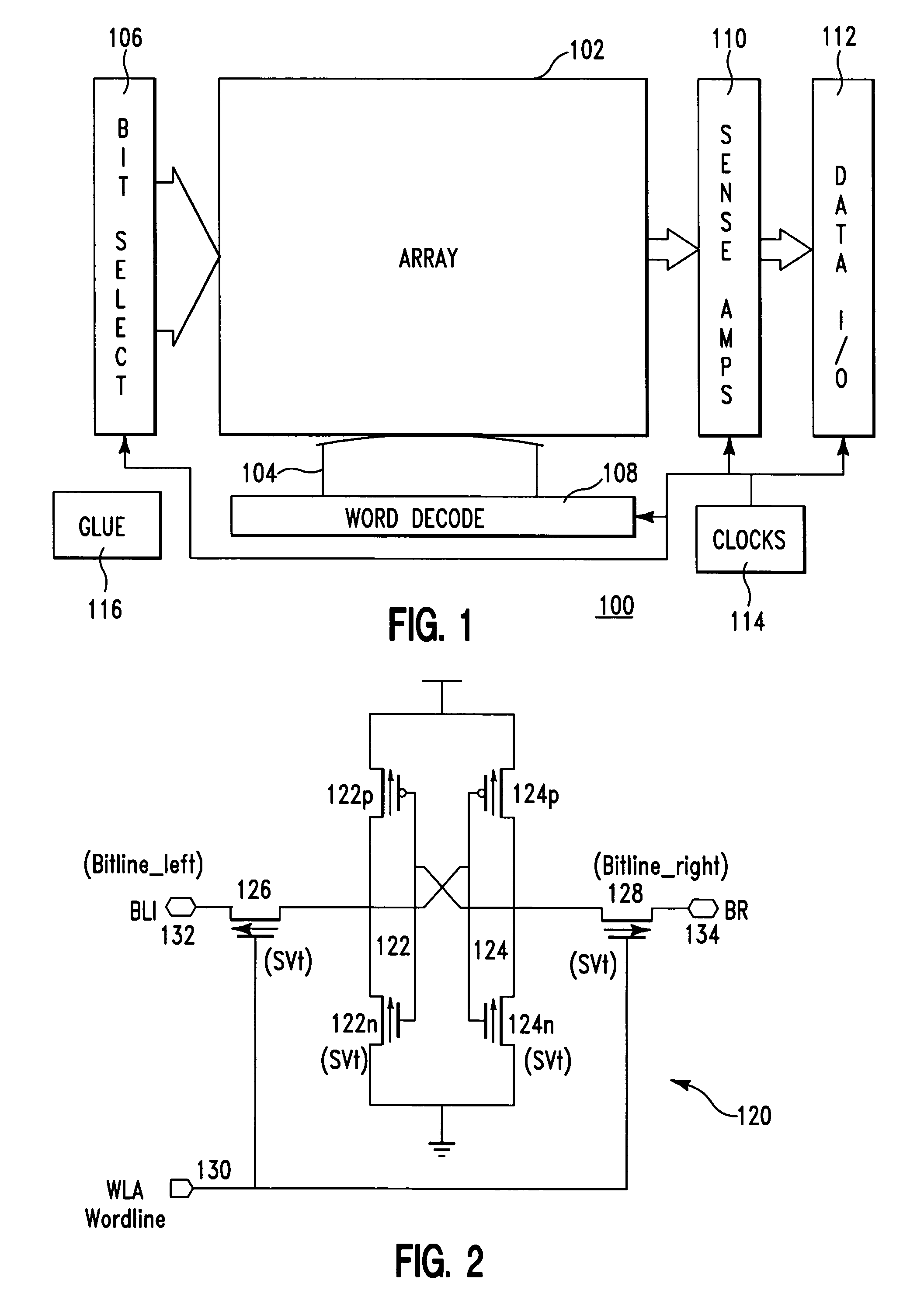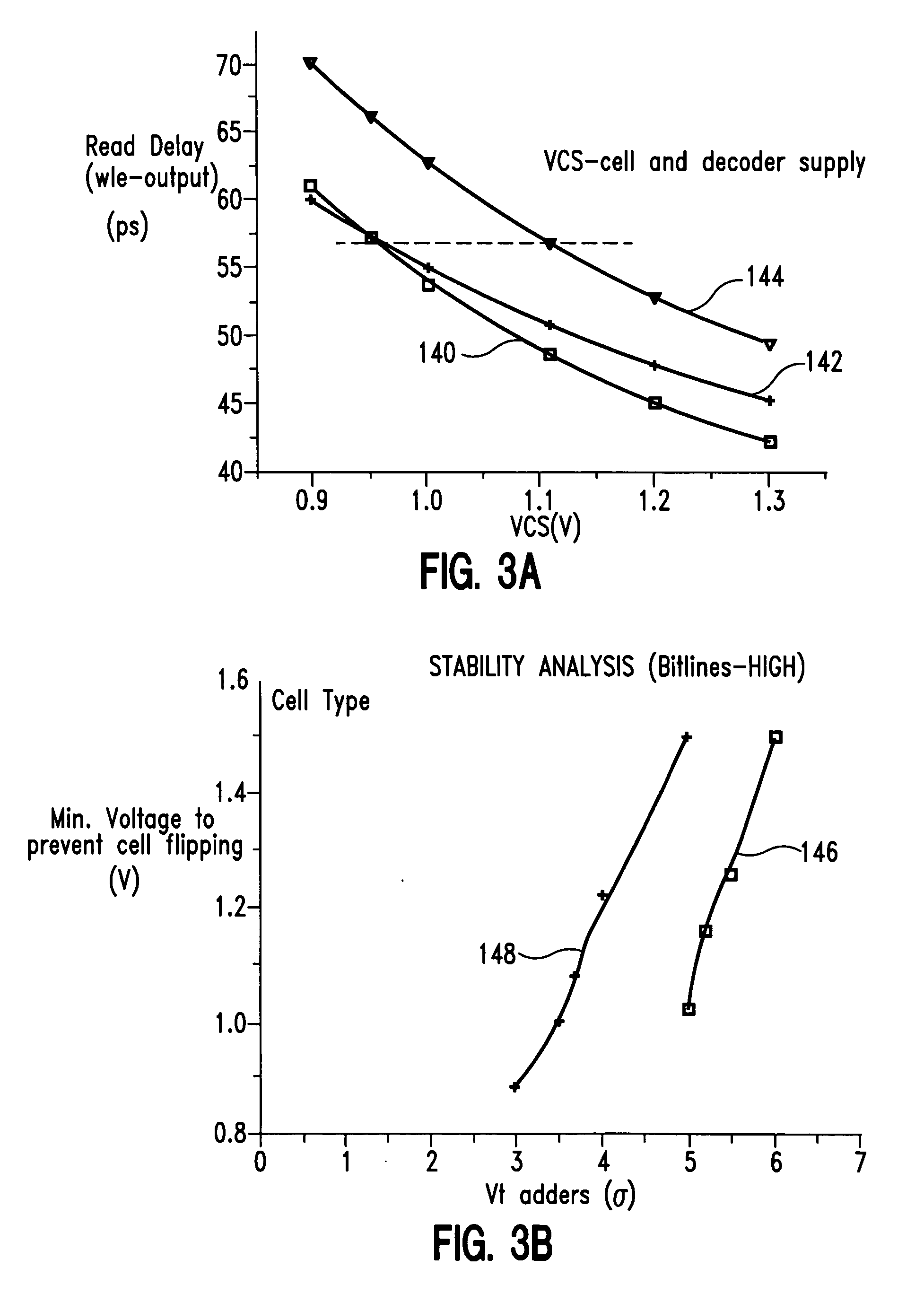Integrated circuit chip with improved array stability
a technology of array stability and integrated circuits, which is applied in the field of integrated circuit chips, can solve the problems of increasing chip power consumption, increasing cooling and packaging costs, and complex fets, so as to improve static random access memory (sram) cell stability, improve sram stability, and reduce sram cell leakage
- Summary
- Abstract
- Description
- Claims
- Application Information
AI Technical Summary
Benefits of technology
Problems solved by technology
Method used
Image
Examples
Embodiment Construction
[0019] Turning now to the drawings and, more particularly, FIG. 1 shows a multi-threshold CMOS (MTCMOS) storage circuit 100 (e.g., memory), macro or chip, according to a preferred embodiment of the present invention. Preferably, the chip is supplied with multiple supply voltages with at least one increased supply that is provided to selected circuits or portions of circuits, e.g., the array 102 and selected support circuits, such as word line drivers 104. Selected devices or field effect transistors (FETs) in those circuits 102, 104 are tailored to reduce leakage current and to be resistant to increased leakage from bias conditions. In particular, support circuit FETs in the storage circuit have a base device design threshold (VT) that is typical for the base technology and horizontally equivalent tailored FETs (i.e., same design length and width) have a higher threshold voltage (VT+), e.g., from thicker gate oxide and channel doping for reduced subthreshold leakage. Individual func...
PUM
 Login to View More
Login to View More Abstract
Description
Claims
Application Information
 Login to View More
Login to View More - R&D
- Intellectual Property
- Life Sciences
- Materials
- Tech Scout
- Unparalleled Data Quality
- Higher Quality Content
- 60% Fewer Hallucinations
Browse by: Latest US Patents, China's latest patents, Technical Efficacy Thesaurus, Application Domain, Technology Topic, Popular Technical Reports.
© 2025 PatSnap. All rights reserved.Legal|Privacy policy|Modern Slavery Act Transparency Statement|Sitemap|About US| Contact US: help@patsnap.com



